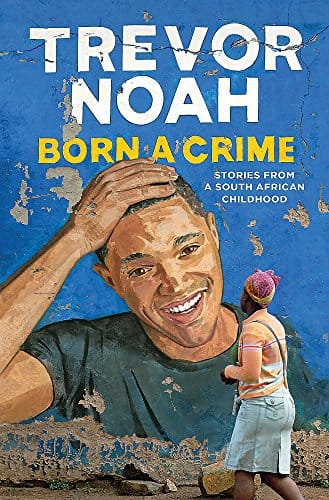Born a Crime: Themes, Impact, and Lessons from Trevor Noah's Memoir
Explore the humor, history, and life lessons inside Trevor Noah's memoir Born a Crime, a riveting look at identity and resilience in post-apartheid South Africa.

Introduction
Since its release in 2016, Trevor Noah’s memoir, Born a Crime: Stories from a South African Childhood, has become a modern classic, staying on bestseller lists, inspiring classrooms, and sparking important conversations about race, identity, and resilience. The book chronicles Noah’s life as a mixed-race child during and after apartheid, using his trademark wit to illuminate the absurdity of a system that literally declared his existence illegal. This article explores the narrative’s major themes, historical context, and enduring impact on global readers.
Plot Overview
The memoir is structured as a series of vignette-style chapters rather than a strictly linear story. Noah starts with his clandestine birth to a Xhosa mother and Swiss-German father—an act punishable by five years in prison under apartheid’s Immorality Act. He then recounts mischievous childhood escapades in Soweto, impossible crushes at multiracial schools, and his teenage hustle as a CD-pirating DJ during South Africa’s volatile transition to democracy. Each chapter ends with a punchline, but the underlying narrative arc depicts a boy turning hardship into resourcefulness, eventually paving the way to his comedy career and, later, hosting The Daily Show.
Historical Context
Understanding Born a Crime requires grasping apartheid’s brutal legal architecture, which governed every aspect of life from 1948 to the early 1990s. People were classified into rigid racial groups—White, Black, Coloured, Indian—and social interaction across categories was outlawed. Noah’s biracial identity placed him outside any sanctioned box, compelling his mother to hide him indoors or pretend he did not belong to her when police approached. By weaving personal anecdotes with concise history lessons, Noah makes the era’s complexities accessible to readers unfamiliar with South African politics.
Major Themes
Motherhood and Matriarchy
The memoir is, at its core, a tribute to Patricia Nombuyiselo Noah, Trevor’s fiercely independent mother. She breaks rules, enrolls him in English-medium schools, and drags him to three church services every Sunday, convinced that faith and education will free her son from systemic poverty. Her defiance against patriarchal and racist structures highlights the power of maternal resilience.
Language as Power
Noah speaks more than six South African languages plus German, using each as a social key. Whether defusing bullies by switching to Zulu or earning trust in Alexandra township by joking in Tsotsitaal, he demonstrates how multilingualism can dissolve barriers that guns and laws cannot. This theme offers a compelling lesson for global readers about the value of cultural fluency.
Identity and Belonging
From being tossed out of a moving minibus by an irate driver to hiding indoors during neighborhood raids, Noah grapples with the question: Where do I fit? The memoir’s tension stems from his liminal existence—too Black to be White, too White to be Black, and too rebellious to remain silent. His journey toward self-acceptance resonates with anyone who has felt like an outsider.
Humor as Survival Tool
Comedy is Noah’s shield and sword. Whether imitating store clerks to amuse classmates or narrating his mother’s miraculous escape from an abusive ex-stepfather, he employs humor to navigate danger and trauma without diminishing their gravity. The reader laughs, then winces, realizing that the joke often masks a harsh reality. This mechanism underscores a broader human truth: laughter can turn oppression into endurance.
Social Commentary
Although the book is deeply personal, it doubles as incisive social commentary. Noah dissects systemic inequities—education gaps, colorism, police brutality—showing that post-apartheid South Africa still echoes with segregation’s legacy. By extension, he invites readers to examine their own societies. The narrative’s specificity provides a mirror that reflects universal problems, from the United States’ racial divisions to Europe’s immigrant integration debates.
Global Resonance
Why has Born a Crime captivated audiences far beyond South Africa? First, Noah’s storytelling blends local detail with universal emotions—love, fear, rebellion. Second, his global platform on television amplifies his message, turning the memoir into a cultural touchstone. Third, the book arrives in an era hungry for authentic voices discussing systemic injustice, making it both timely and timeless.
Key Takeaways for Readers
Empathy expands horizons: By stepping into Noah’s shoes, readers gain nuanced insight into apartheid’s cruelty and the resilience it forged.
Humor heals: Laughter can be an act of resistance, transforming pain into communal understanding.
Language matters: Speaking to people in their own tongue fosters trust, breaks stereotypes, and builds bridges.
Mother figures shape futures: Patricia’s unwavering belief in her son illustrates how one determined parent can alter generational trajectories.
Conclusion
Born a Crime is more than a celebrity memoir; it is a riveting study of identity, a tribute to maternal love, and a primer on South African history. Through crisp prose and gut-punch humor, Trevor Noah turns personal chaos into a universal call for empathy and social change. Whether you are a book club enthusiast, a history buff, or someone seeking a gripping narrative, this memoir offers both entertainment and enlightenment—proof that even in the darkest systems, the human spirit can find light.



